From Abarth’s angry little stingers to V12 Ferraris and everything in between, Italy offers one of the world’s most diverse portfolios when it comes to sports cars. As different as they are, what unites them all is that they’re engineered with passion and overflowing with character.
After all, Italy is known for its zealous dedication to finding beauty and excitement in everything, which definitely reflects on our favorite automotive segment. With that in mind, it is near impossible to make a definitive list of Italy’s greatest sports cars without it being an encyclopedic collection. So, here’s our selection of fifteen amazing Italian sports cars that all played important historical roles, shaping the automotive world to this very day.
#1: Alfa Romeo 6C 1500 Sport

Before the Ferraris, the Maseratis, the Abarths, and the Lamborghinis, Alfa Romeo was the quintessential Italian sports car maker—and there’s a common consensus that it all started with the 6C 1500 Sport. It was a 1.5-liter straight-six-powered 2-seater built in several specs, including ones with dual overhead camshafts and a supercharger.
Regardless of particular specification, the 6C 1500 Sport was specifically built to compete in all types of races—including the fabled Mille Miglia, where it won in 1928, scoring the first out of 10 victories for Alfa Romeo.
In addition to competing in prestigious events, Alfa Romeo 6C 1500 Sport appeared in numerous local races, driven by aces who were yet to prove themselves to the developing racing world. One of them was Enzo Ferrari, who established Scuderia Ferrari in 1929 as an Alfa Romeo racing team thanks to his success with this car. So the 6C 1500 Sport not established Alfa Romeo as motorsport royalty but also helped create what would become the most recognizable sports car maker in the world.
#2: Cisitalia 202

Established by Piero Dusio in 1946, the Cisitalia brand didn’t survive long in the unforgiving economic climate of post-WW2 Italy. Still, it is regarded as one of the most influential Italian automotive companies despite being relatively anonymous outside of car enthusiasts’ circles. The main reason for that is this very automobile. The Cisitalia 202 was conveyed as both a road and a race car and was in part engineered by Carlo Abarth.
The chassis and body design was the first project carried out by a young designer named Battista Farina, and it proved to become one of his most influential ones. The Cisitalia’s fluid, sculptural body with a long hood and a short cabin set a blueprint for generations of berlinettas and barchettas.
The design soon gained international recognition when the Cisitalia 202 was included in MoMA’s 1951 exhibition named 8 Automobiles. By that time, though, both Farina and Abarth had set up their blossoming businesses, creating other automotive icons one by one.
#3: Maserati A6 1500

Just like Enzo Ferrari cut his teeth in racing before transferring to road cars, the Maserati brothers also employed their experience from motorsports to create fast street going automobiles. The A6 nameplate thus appeared almost simultaneously on some very different cars, all powered by lively straight-six engines.
The alphanumeric designation stood for Alfieri Six-Cylinder, while the numbers signified engine displacement of either 1.5 or 2 liters. Humble by today’s standards, the engines were sufficient for late 1940s Italy, and the race cars’ success was followed by a roadworthy A6 1500.
Maserati brothers commenced the A6 series’ development before the war, finishing it in 1947. Since Pinin Farina drew this car as well, the A6 1500 was a streamlined coupé with a long hood, much like the previous car on the list. In its three-year production span, Maserati built 61 of these cars, upgrading to the A6G 2000, A6GCS/53, Maserati A6G/54, and the A6GCM single seater. The momentum Maserati gained with the A6 series gave birth to the 3500 GT—a car which put Maserati on par with the industry’s greatest names (and where it remains to this day despite all its ups and downs).
#4: Fiat Abarth 595
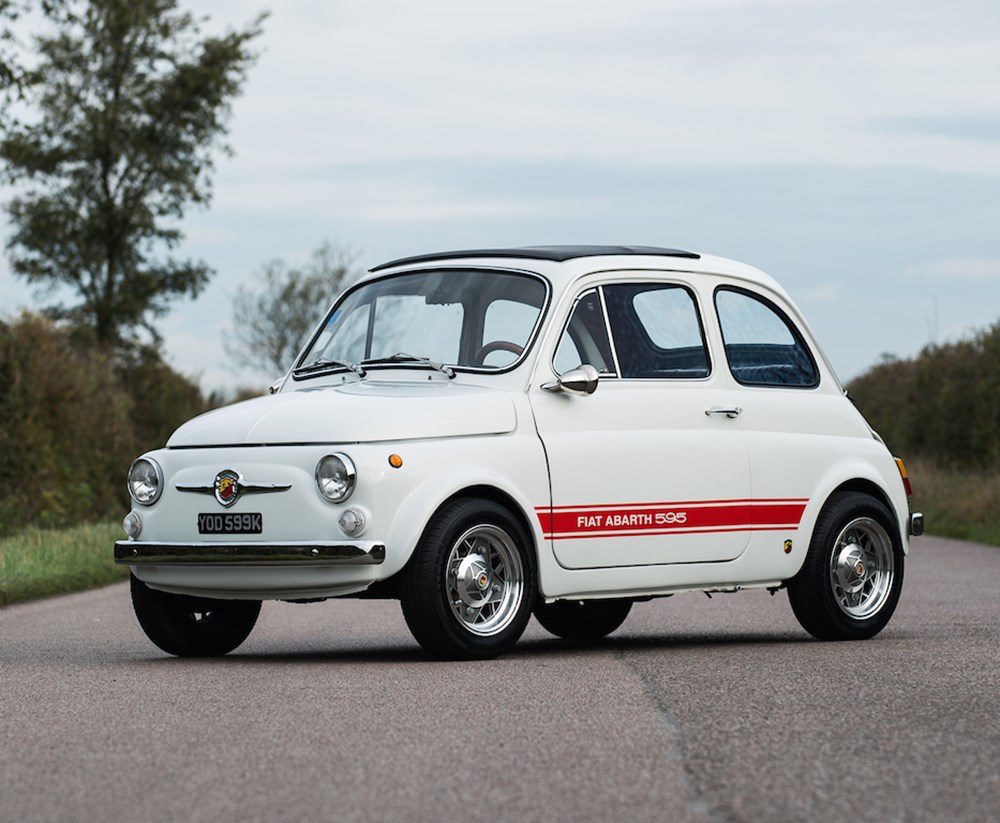
Post-WW2 Italy has had it quite rough, balancing out between raw material shortages and a need for an economic rebuild. This situation gave birth to the Fiat 500, a new Italian people’s car introduced in 1957. With a rear-mounted 2-cylinder engine, it was hardly anything but a family car—but its charming design and affordable price tag made it the nation’s favorite.
Miniature in dimensions and with a canvas roof saving up on steel, the 500 was an ideal car to buzz around narrow Italian city streets. As it quickly turned out, many thought the 500 could do it faster, and one speed specialist went to the greatest lengths to prove it.
By the time Fiat introduced the 500, Carlo Abarth had already established a business connection with Fiat, which made the process easier. In Abarth’s workshop, the 500 first got its power upped from 13 to 21 horsepower, but the first substantial change came in 1963 when the engine’s displacement was increased to 593 cubic centimeters.
The Fiat Abarth 595 was the foundation for all further enhancement, as well as other Abarth projects within Fiat, until he eventually sold his company in 1971. Finally, when the 500 Nuova was reborn in modern guise, the 595 made a roaring comeback, proving just how big of an impact this tiny sports car had on the Italian automotive scene.
#5: Ferrari 250 GTO

On the completely opposite side of the spectrum is the most advanced Italian sports car of the 1960s, crème de la crème of the renowned 250 Series and the most valuable classic car in the world: the Ferrari 250 GTO—Gran Turismo Omologato.
The 250 GTO was built from 1962 to 1964 to meet homologation requirements of FIA’s Group 3 (the uppermost GT class), and as such, it gathered Italy’s greatest engineers: Giotto Bizzarrini, Sergio Scaglietti and Mauro Forghieri. In a heated development process, the 250 GTO was born and produced in 36 examples.
As its name suggested, this car was intended to be used in racing, both by Scuderia Ferrari and privateers personally approved by Enzo Ferrari. After an illustrious racing career, the Ferrari 250 GTO became hot in collector circles for its rarity, beauty and motorsport provenance in the golden era of GT racing. And the rest is history.
#6: Lamborghini Miura
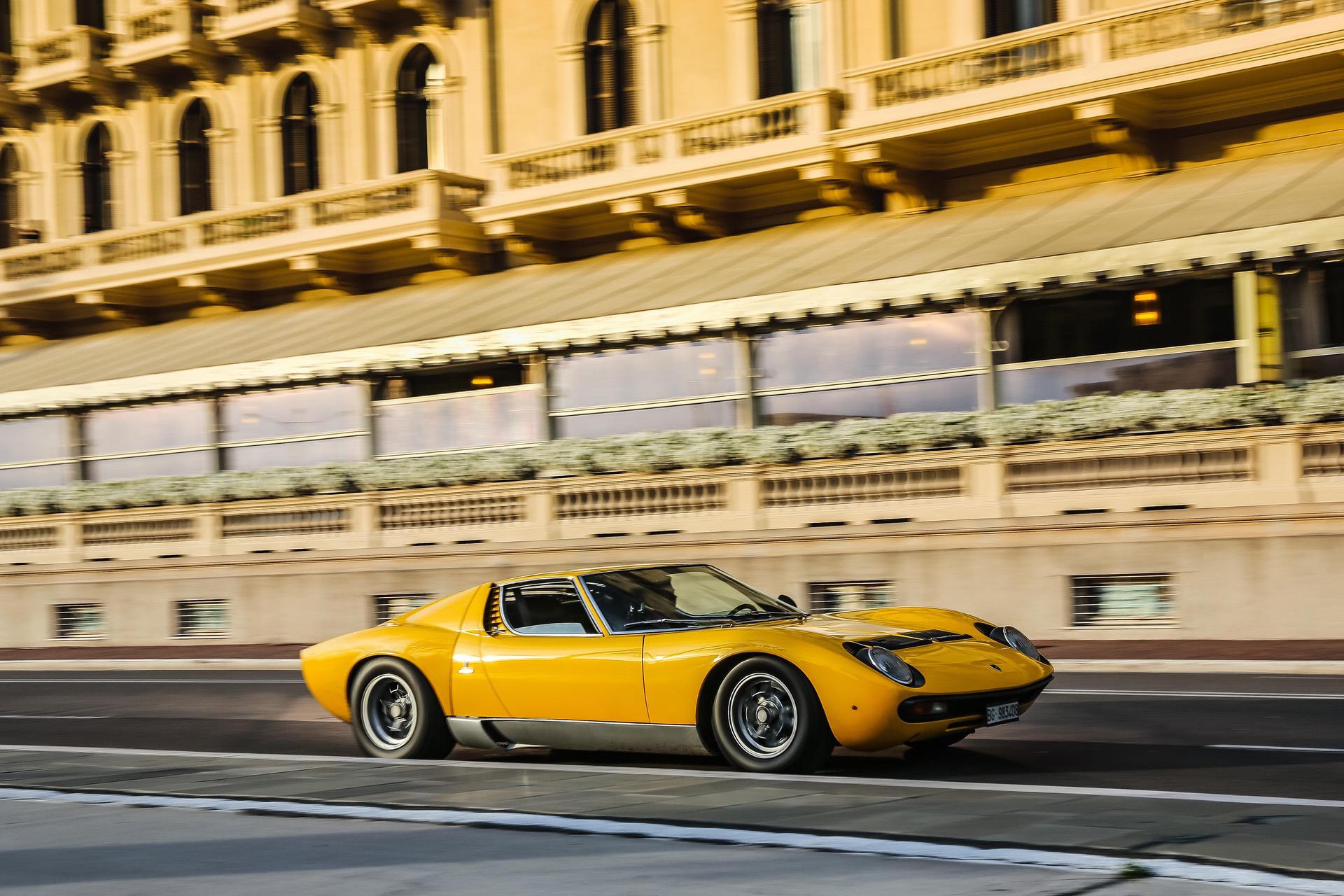
Ferrucio Lamborghini’s first car was stunning without any doubt but was hardly revolutionary, as it was a direct answer to Ferrari’s V12 grand tourers. The Miura, on the other hand, was exactly what a tractor manufacturer from Sant’Agata Bolognese needed to prove itself to the world—and, more importantly, disrupt Enzo Ferrari himself.
What made the Miura so unforgivingly revolutionary wasn’t its gorgeous body (it famously didn’t need one to infuriate Enzo at the 1965 Turin Motor Show). Instead, it was Giampaolo Dallara and Paolo Stanzani’s novel semi-monocoque naked chassis with a transversely mid-mounted V12. This moment marked the birth of the modern supercar, transforming the world of sports cars forever.
#7: Alfa Romeo 33 Stradale

In its long and illustrious history, Alfa Romeo had dozens of truly iconic sports cars and even though each of them left a big mark on the nation’s automotive history, one car in particular rules above them all.
It was the mythical Alfa Romeo 33 Stradale, a street worthy Alfa Romeo 33/2 prototype given a new body by master designer Franco Scaglione. Low, voluptuous and with butterfly doors, the 33 Stradale blurred the lines between road and race cars. Only 18 chassis were ever created, five of which became the most influential concept cars of the 1960s and the 1970s.
Today, the original 33 Stradale is considered to be the most beautiful sports car ever created. Seeing it in person is the automotive equivalent of experiencing a great work of Renaissance art.
#8: Fiat 124 Spider

Back in the days, Fiat had a history of producing a whole range of different cars under one platform, and such was the case with the 124 as well. Originally a family sedan or a wagon, the Fiat 124 was more famously a coupé and a convertible.
The more famous of the two, the 124 Spider mated somewhat simple mechanics with an alluring body from Pininfarina’s Tom Tjaarda, becoming an instant hit not only in Europe but across the pond, too.
In its native continent, it was an affordable piece of la dolce vita with a rallying pedigree—and in America, it became one of the most successful Italian imports. Launched amidst the ongoing safety crisis, when most manufacturers abandoned developing new convertibles, the 124 Spider continued on selling in the United States all the way to 1985.
Fun fact: the 124 Spider demonstrated one of the most Italian engineering efforts of all time. To meet minimum headlamp height requirements in the States, engineers at Fiat simply made the 124 Spider’s suspension higher instead of redesigning the front end—because nobody messes with Italian design.
#9: DeTomaso Pantera

Even though this car proudly wore an Argentinean flag on its logo and was famously powered by a palette of Ford V8 engines, the De Tomaso Pantera was still engineered and made in Italy—effectively making it an Italian car.
Alejandro De Tomaso based his automotive operations in Northern Italy, home of every sports car maker that mattered, and his main goal was to produce a competitive modern sports car to rival the industry’s greats. The first car to come close was the Mangusta, but the Argentinean industrialist hit a homerun with its successor, the Pantera.
What made the Pantera so great, though, was not just the fact that it offered a taste of Italian exotica for a fraction of the price, but that it also outsold all its competition by a landslide. Today, Ferraris and Lamborghinis are selling in the tens of thousands, but with over 7,000 cars produced from 1971 to 1992, the Pantera was a pioneering mass-produced Italian mid-engined sports car.
The secret of the De Tomaso Pantera’s success was in Ford’s extensive dealership support in the United States, the most lucrative overseas market for high performance automobiles. Performance-thirsty Americans were offered a car that looked and performed like a thoroughbred exotic with the running costs of a Ford. In the longer run, De Tomaso couldn’t keep up with the rest of the industry, leaving the Pantera as the company’s greatest success and a milestone car for independent Italian carmakers.
#10: Lamborghini Countach

Just like the Miura sent shockwaves through the industry in 1965, the Lamborghini Countach did pretty much the same in 1971 as a concept and in 1974 as a production car. Minimalist, razor sharp and hostile, the new Lamborghini flagship was another masterpiece by Marcello Gandini.
The V12 was mid-mounted again, but this time longitudinally with the gearbox up in front. The notoriously cramped interior was just a part of the drama, because upward-opening scissor doors completely stole the show as the car’s standout feature.
The Countach was not only one of the wildest production cars ever to come from Italy, but its numerous updates have rendered it even more extreme than Gandini originally envisioned. With its gratuitous use of aerodynamic addons, the 5000QV and 25th Anniversary variants epitomized all the 1980s excess, becoming the decade’s greatest pop culture icons.
Beyond just its cultural significance, the Countach is immensely important as it was pivotal for Lamborghini. Its basic layout is still an essential piece of Lamborghini’s identity, both mechanically and style-wise, which is what makes the Countach the milestone car for Sant’Agata Bolognese.
#11: Lancia Stratos

Lancia’s ascension towards rallying stardom began in the mid-1960s, when Fiat took over and Cesare Fiorio formed HF Squadra Corse. The nimble front-wheel drive Fulvia took on the national and European rallying scene, but to remain at the top of highest rallying echelons after the 1972 world title, Lancia needed more. There came the Stratos, the first car purpose-built for rallying.
From its short wheelbase to the panoramic windshield, each part of the Stratos put function over form, but its body was all but forgettable. Gandini’s genius shined once again, creating a wedge-shaped weapon of a car with a staggered stance and alien-like aura.
For the performance to match the looks, the Stratos was Ferrari-powered, sporting a 2.4-liter V6 from the Dino 246. Once homologated, the Stratos demonstrated its dominance, winning three consecutive world titles from 1974 to 1976 and scoring victories as late as 1981. The Stratos revolutionized rallying by making it more radical and experimental, changing the sport forever and pushing the boundaries of sports car design to a whole new level.
#12: Ferrari F40
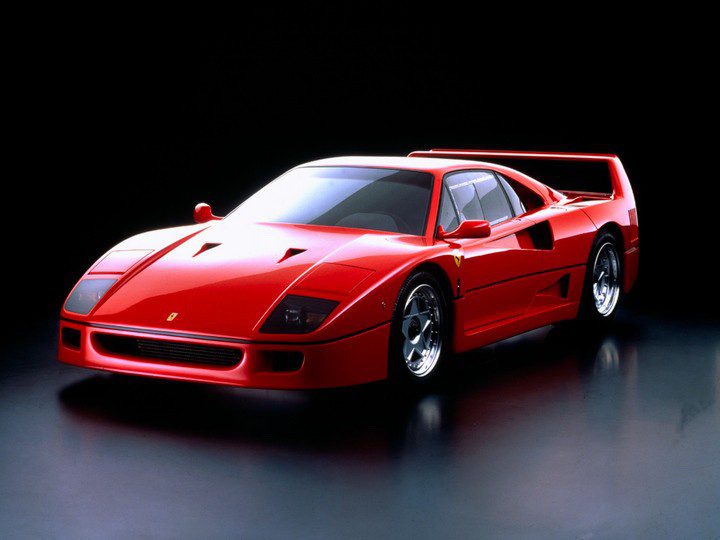
Enzo Ferrari was famously opposed to the idea of mid-engined cars, but the BB series broke the ice and Maranello entered a new era. The 308 became the company’s staple sports car and the 288 GTO supercar revived the iconic nameplate as a homologation special built to compete in Group B. Its successor was released in 1987 to celebrate 40 years of Enzo and his company creating the world’s most exclusive sports cars—and as expected, it ended up being the world’s greatest sports car.
Built around the 288 GTO, the Ferrari F40 had every bit turned up to eleven. The body was a cleaned up 288 GTO Evoluzione, the 2.9-liter twin-turbo V8 pushed nearly 480 horsepower, and the stripped-down interior perfectly underlined Ferrari’s racing prowess.
To kids who dreamed of it, this iconic piece of machinery was a childhood poster car, and those lucky enough to drive it found it to be the most thrilling driving experience money could buy. Moreover, the F40 was an enormous success by hypercar standards, making full use of the 1980s economic boom by selling over 1300 copies instead of an initially-planned 400-car run.
On a sad note, this was also the last car personally approved by Il Commendatore, who passed in 1988. Three and a half decades after its premiere, the F40 is still the epitome of an Italian supercar, and it’s easily one of the most remarkable cars mankind has ever built.
#13: Lancia Delta Integrale

Born out of the monstrous Delta S4, the Delta Integrale was a simplified, more serene take on the iconic homologation special. In the aftermath of Group B’s demise, this all-wheel drive five-door hatchback continued where the S4 was forced to stop, winning six consecutive World Rally Championships from 1987 to 1992 under Group A regulations and Martini Racing colors.
Parallel to its victories, the roadgoing Delta Integrale was evolving too—getting wider fenders, more power, and various revisions that made it more assertive when pushed to its limits.
As it turned out, the Delta Integrale was the last ray of sunshine in Lancia’s motorsport mythos. After the Integrale, it all gradually went downhill for Lancia, and now it barely exists, awaiting its big comeback or total demise. Thanks to the Delta Integrale and all its accomplishments though, Lancia will forever be remembered as one of Italian industry’s greatest—no matter what the future brings.
#14: Pagani Zonda

Another car with South American roots and a non-Italian powertrain, Pagani Zonda is Italian by its birthplace and spirit (and an all-time great for disrupting the status quo in the Italian exotic industry). Under Juan Manuel Fangio’s guidance, Horacio Pagani left his native Argentina to pursue a career in Northern Italy. Eventually, he settled with Lamborghini, where he pioneered the use of carbon composites by building the lightweight Lamborghini Countach Evoluzione concept.
Following the dream of building his own hypercar, Pagani founded Modena Design and began working on his vision of automotive perfection. That car was the Zonda, a car built with maximum passion and minimal compromises, encapsulating Horacio Pagani’s quest for automotive perfection on both an artistic and technical level.
When stationary, the Zonda is equal parts simple and dramatic, but once the Mercedes-Benz V12 was fired up, all its vigor could come to life. Originally unveiled in 1999, the Zonda C12 was a big step for Horacio Pagani, and the fact that he’s preparing his third generation hypercar is a living testament to the first one’s greatness.
#15: Ferrari Enzo

The early 2000s was an era of massive changes in the industry, when high-tech materials, electronics, and computers started taking over. It was also the era of hypercars that exploited this influx of new technologies to achieve new levels of performance.
After the F50’s unfairly lukewarm reception, Ferrari aimed for redemption with the Enzo. A car bearing the founder’s name had to be great—and it most definitely was, setting a generation-defining performance benchmark and spicing it up with Ken Okuyama’s offbeat-yet-awesome design.
What also makes the Ferrari Enzo so great and irreplaceable on the list is its influence on Maranello’s future. First of all, the hypercar’s architecture gave us the brilliant Maserati MC12, and the F140 V12 was not a one-car affair either. From the Enzo onwards, all V12 Ferraris carried the same engine, from the 599 GTB Fiorano and its front-engined successors and offsprings all the way to the next-gen LaFerrari hypercar and ultra exclusive cars from the Icona programme. All of which is to say, the Enzo had an immeasurable impact on Ferrari in what’s possibly the final era of V12 engines.





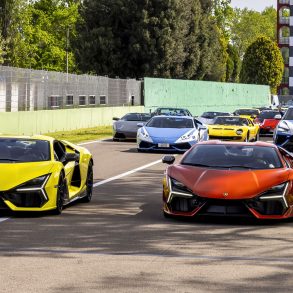


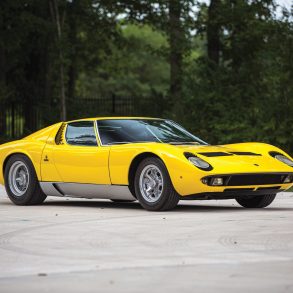
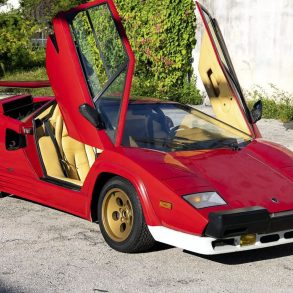

“This moment marked the birth of the modern supercar, transforming the world of sports cars forever.” this sentence belongs to 33 Alfa